Rethinking a 40-year-old medical device with Programmable Foam®
At Create it REAL, we run a youth program that supports young people throughout their educational and entrepreneurial journey. In this program, we collaborate on master’s projects, offer internships, and provide opportunities through the Erasmus program. We are also actively involved in Denmark’s start-up network, helping new initiatives learn from our experience and begin their journey.
For us, this is not only a way to give back—it’s also a great way to recruit new talent. Often, an internship leads to a student job, and sometimes even to a full-time engagement. In this article, we would like to share the story of a master’s project in which we were involved.
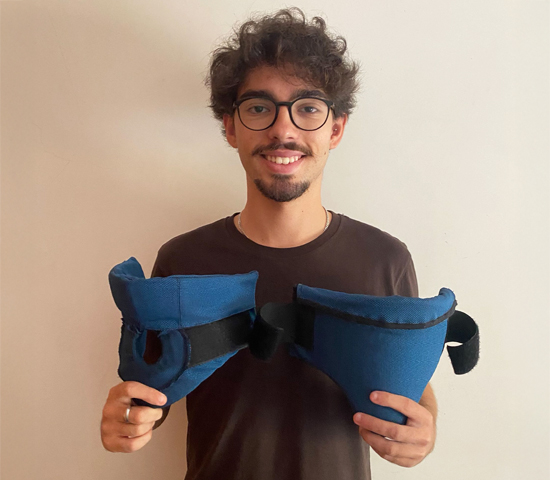
That we became part of this project is thanks to Martim Beja Afonso. When he began his master’s thesis in product and industrial design at the Faculty of Fine Arts, University of Porto in Portugal, he wanted to work on something meaningful. The opportunity came through a collaboration with Hospital de Santo António, a university hospital that had long relied on the Philadelphia cervical collar—the global standard for neck stabilization in trauma and recovery. This device, unchanged for decades, was widely used but increasingly criticized by both clinicians and patients. The hospital’s neurosurgeons and nursing staff shared with Martim a long list of complaints: discomfort, skin damage, hygiene issues, and lack of sustainability. It was a daunting challenge for a student project.
40-year-old medical benchmark
The Philadelphia collar had been the benchmark for over 40 years, but the design came with serious drawbacks. Patients reported pressure ulcers on the back of the head, restricted ability to eat, and deep marks on the skin from ventilation holes that were ineffective in practice. The collar’s foam and plastic construction made it impossible to sterilize—once soiled, it was simply discarded. This not only raised concerns about hygiene and infection control, especially for patients with open wounds, but also generated significant medical waste.
Clinicians recognized that the device could be improved, but there had been little innovation in this field. For Martim, the challenge was clear: how to design a safer, more comfortable, and more sustainable cervical collar within the scope of a master’s thesis.
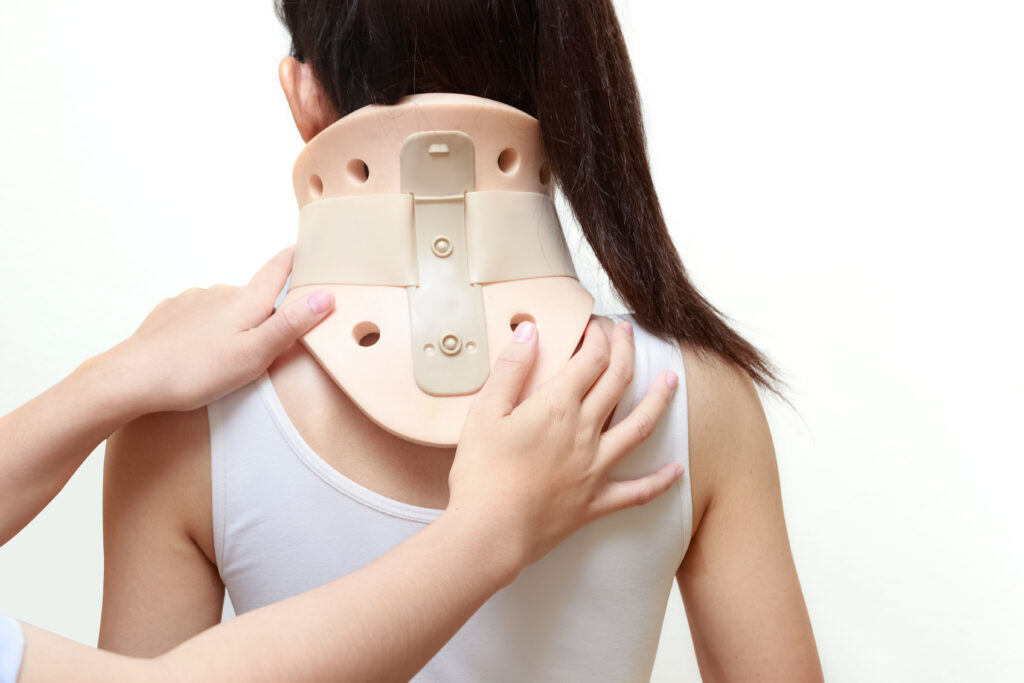
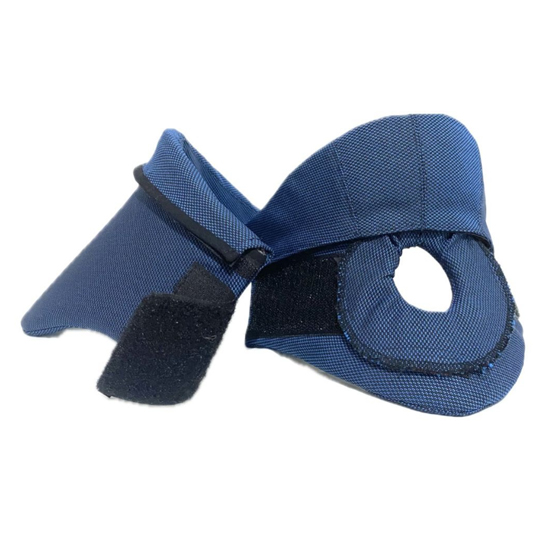
When clinical performance meets sustainability
Martim faced multiple challenges at once. He needed to balance patient comfort with clinical performance, while also considering manufacturability and sustainability. Reducing pressure points and improving ventilation were crucial, yet he had to ensure the collar still provided full immobilization of the cervical spine. He also lacked direct access to patient testing, since clinical trials required lengthy approvals. Instead, he relied on feedback from neurosurgeons and nurses, who evaluated prototypes based on their experience.
Martim also needed to find the right materials—something breathable, washable, and biocompatible—that could replace conventional foams.
Programmable Foam® as part of the solution
The turning point came when Martim discovered Create it REAL’s Programmable Foam® technology. Intrigued by its potential, he reached out to our team, who explained how the 3D-printed foam structures could be tailored to different rigidities, shapes, and ventilation levels. This was exactly what he needed.
Using Programmable Foam®, Martim designed a cervical collar with an open-cell structure that allowed air to flow freely, reducing sweat, odor, and skin irritation. The material can withstand sterilization at temperatures of up to 130°C, making it reusable and far more sustainable than single-use alternatives.
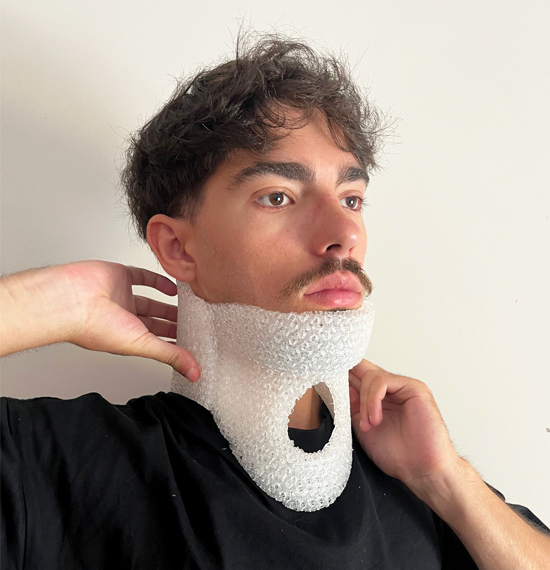
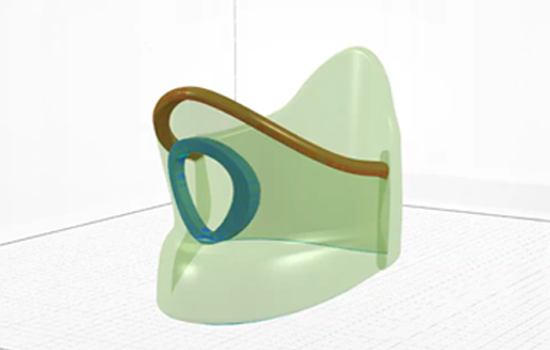
Beyond material choice, Martim refined the design itself. He lowered the collar’s height to make eating easier, curved the back to reduce pressure on the skull, and explored textile covers for added comfort. Working with Portugal’s main textile innovation center, he developed a polyester cover treated for water resistance, allowing patients to shower or clean the device without compromising hygiene. This combination of design and material innovation addressed both patient comfort and hospital sustainability goals.
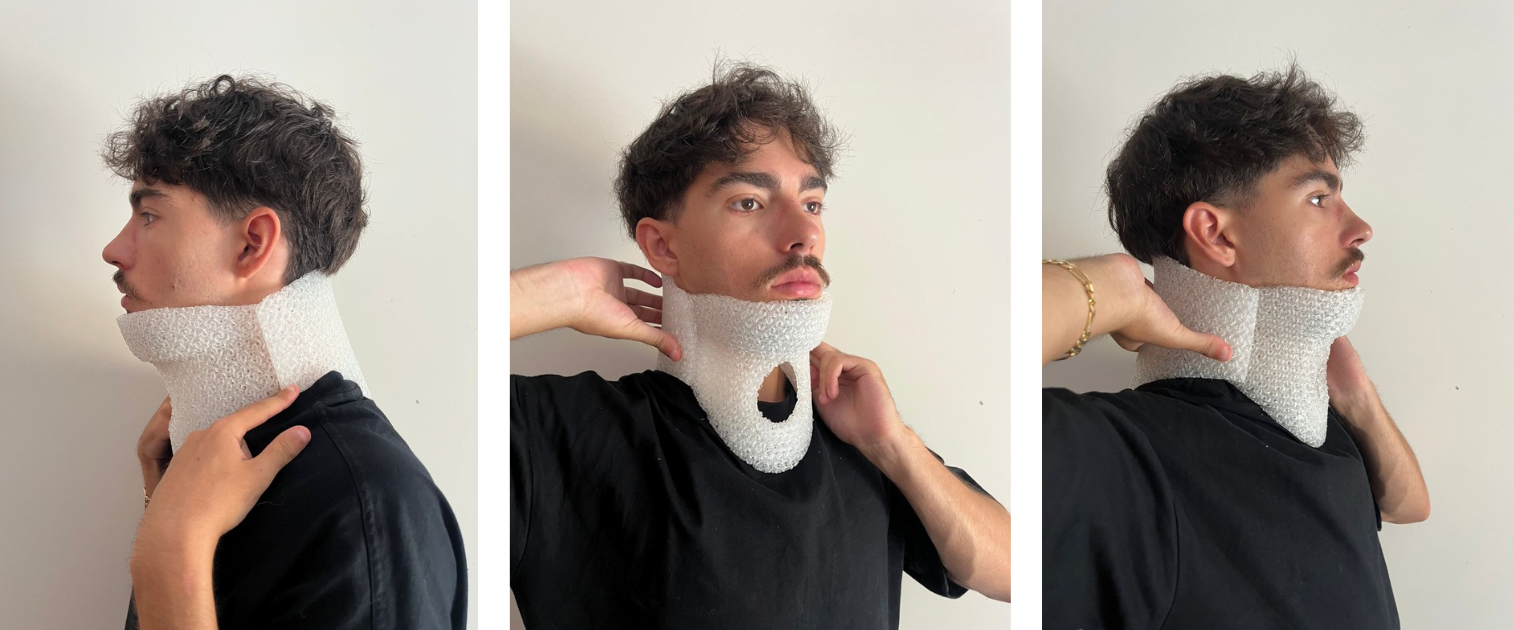
Reviewed by clinical staff
The project became a collaborative effort. Martim worked closely with neurosurgeons, nurses, textile engineers, and Create it REAL to refine the prototypes. He also involved local craftsmen—including an upholsterer more accustomed to car seats—who stepped out of their usual work to help him shape and stitch the first covers.
While full-scale patient testing was not possible within the timeframe of his thesis, the clinical staff who reviewed the prototypes were impressed. They noted that the new collar addressed many of the long-standing complaints associated with the Philadelphia model, including ventilation and hygiene, as well as ergonomics and pressure distribution.
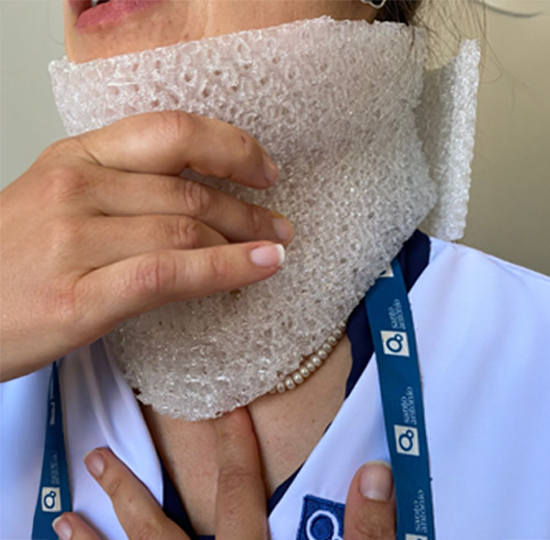
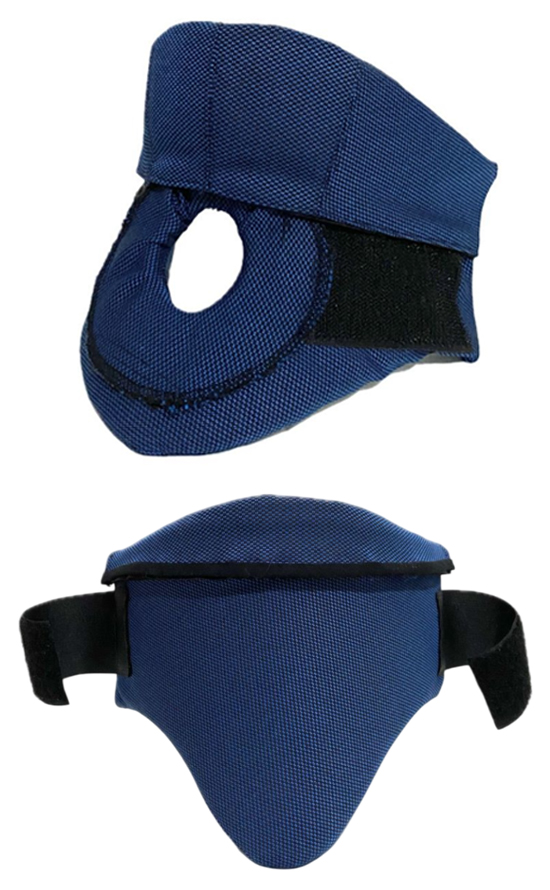
A lesson in collaboration
Martim’s cervical collar project demonstrates how new technologies, such as Programmable Foam®, can open doors to rethinking even the most established medical devices. By combining design thinking, collaboration across disciplines, and innovative materials, he successfully addressed decades-old problems in just a few months of focused work. Although further testing and development are needed before hospital-wide adoption, the feedback from clinicians has been highly encouraging.
For Martim, the project was more than an academic exercise—it was a chance to make a real difference. “Every time I came to the hospital, they were happy to see me and the product advance,” he recalls. “It motivated me to keep going, step by step, knowing this could improve comfort and safety for patients.”
What began as a student challenge may well become the next generation of cervical collars—lighter, cleaner, and more humane.
All the credit goes to Martim. We are proud of the small part we played in this project, and of how sustainability is now an essential part of product design—both today and in the future. How Martim solved the challenge is a true inspiration. Congratulations to you, Martim.



